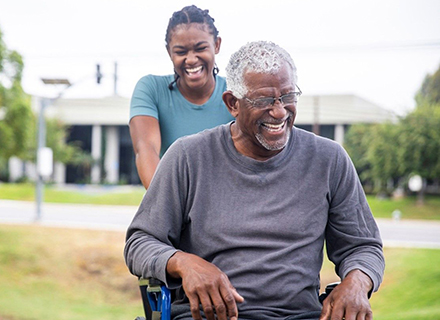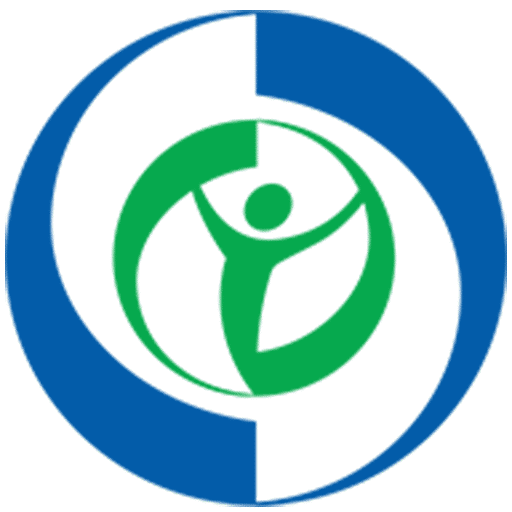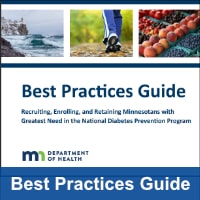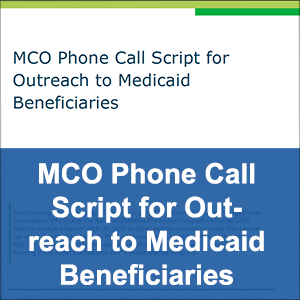Medicaid → Implementation → Communicating and Promoting the Benefit
Communicating and Promoting the National DPP as a Medicaid Benefit
Achieving Medicaid coverage of the National DPP lifestyle change program is an important milestone towards reducing the prevalence of type 2 diabetes in a state. To facilitate uptake of the benefit, states are encouraged to leverage a variety of communication and promotion strategies to generate enthusiasm, buy-in, and engagement with the benefit. A communication and promotion strategy for the National DPP lifestyle change program is important for several reasons:
- Effective implementation of the program often involves multi-sector stakeholders coming together in innovative ways. For example, a CDC-recognized community-based organization (CBO) may have a long history of delivering the National DPP lifestyle change program to community members through grant funding and may never have sought reimbursement from the state’s Medicaid program or Medicaid managed care organizations (MCOs). Communication efforts can explain how the CBO can enroll into Medicaid and contract with Medicaid MCOs to obtain a sustainable reimbursement funding stream.
- Health care providers (HCPs) may not be accustomed to screening for prediabetes or referring their eligible patients to the National DPP lifestyle change program. Communication efforts can offer tools for HCPs to screen and refer eligible patients.
- The Medicaid National DPP lifestyle change program benefit design, including delivery modality, fee schedules, provider type, and eligibility may vary from state to state. States will need to communicate to stakeholders the specific details of the benefit to support implementation.
- Many Medicaid beneficiaries may be unaware that prediabetes is a diagnosis, that type 2 diabetes is preventable, and that the National DPP lifestyle change program (and associated program supports, if applicable) may be available to them free of charge.
This page describes approaches that states have taken to communicate and promote the benefit. The page is divided into six sections:
- Communication Components
- Multi-Stakeholder Communication
- CDC-Recognized Organization Communication
- Medicaid MCO Communication
- Health Care Provider Communication
- Participant Communication

Communication Components
There are many different components a state will need to communicate about the National DPP lifestyle change program as a Medicaid benefit. For example, what are the specific Medicaid requirements and details of the benefit? Is only in-person delivery reimbursed, or distance delivery as well? What is the fee schedule? As stakeholders, such as MCOs, CBOs, and HCPs, come together to support the program, clear and timely communication about the National DPP lifestyle change program as a Medicaid benefit is crucial. Additionally, communication is also needed to help Medicaid beneficiaries become aware of the new covered benefit.
Three factors to consider when building a state communication plan are the:
- Objectives
- Audience
- Communication Approach
Objectives
What are the objectives of the communication that is being created? Some common objectives may be to communicate the following about the National DPP lifestyle change program:
- Value Proposition. Providing awareness of the growing prevalence of type 2 diabetes in the United States and state the evidence that the National DPP lifestyle change program can prevent or delay the onset of type 2 diabetes.
- Benefit Design. Providing specific details of the Medicaid benefit such as the fee schedule, delivery modalities, provider types, and program eligibility.
- Recruitment, Enrollment, and Retention. Providing information on how to increase participation and uptake of the program. For example, how HCPs and care teams can screen, identify, and refer patients to the program through a bi-directional referral system.
Audience
Who is the primary audience for the communication? Many different stakeholders in a state should be made aware that the National DPP lifestyle change program is a Medicaid benefit. The following lists several common audiences, and the remainder of this page describes audience-specific outreach in greater detail.
- Organizations that deliver the National DPP lifestyle change program. States are encouraged to outreach to CDC-recognized organizations to ensure they are aware that the program is a Medicaid benefit, and they understand how to access Medicaid reimbursement. More detail on specific information to share with CDC-recognized organizations is described in the CDC-Recognized Organization Communication section of this page. States may also want to outreach to organizations that are considering an application for CDC recognition. For more information on engaging potential new CDC-recognized organizations, please see the CDC-Recognized Organization Communication section below and the Building Network Capacity page of the Coverage Toolkit.
- Lifestyle coaches. Medicaid provider eligibility to deliver the National DPP lifestyle change program to Medicaid beneficiaries varies from state to state (for more information, please see the Determining the Medicaid Enrolled Provider Type page of the Coverage Toolkit). States can conduct outreach to current and potential new lifestyle coaches to ensure they know the program is a covered benefit. Outreach to lifestyle coaches may be similar or the same as information that is provided to CDC-recognized organizations.
- Medicaid MCOs. In states with Medicaid managed care, MCOs not only reimburse CDC-recognized organizations for delivering the program but can also identify and recruit eligible Medicaid MCO plan members. Engaging managed care in the planning and implementation of the benefit may help generate buy-in from the MCOs and increase Medicaid beneficiaries’ participation in the program. For state examples, see the Medicaid MCO Communication section below. For more information about engaging MCOs, see the Engaging MCOs to Attain Coverage page of the Coverage Toolkit.
- Organizations and individuals who can identify and refer eligible patients, including state health information exchanges and networks, quality information networks and organizations, and HCPs such as physicians, nurses, social workers, and pharmacists. For state examples of communication to HCPs, see the Health Care Provider Communication section below. Health care clinics and hospitals also often are—or may be interested in becoming—CDC-recognized organizations. Accountable care organizations (ACOs) and other HCPs engaging in alternative or value-based payment and delivery models may be particularly incentivized to identify and refer eligible patients because their payment structures are designed to incentivize quality of care over volume of services. For more information on how to engage ACOs, please see the How to Engage ACOs in the National DPP Lifestyle Change Program page.
- Professional organizations. Organizations and individuals can partner with the state health department and Medicaid agency to increase engagement with the benefit, through actions such as working with HCPs to increase referrals and creating marketing campaigns for the benefit. For example, state medical associations and American Diabetes Association chapters could be partnered with to support the program.
- Participants. States can outreach to potential National DPP lifestyle change program participants by creating webpages to help individuals learn about prediabetes, the National DPP lifestyle change program, and how to get enrolled. Marketing campaigns may also include TV ads, billboards, radio ads, social media, posters, and text communications. Awareness posters may be provided to physician practices within an MCO’s provider network and public transportation agencies. For state examples of outreaching to potential program participants, see the Participant Communication section below. To learn more about outreaching to potential program participants, see the Recruitment and Referral page of the Coverage Toolkit.
Communication Approach
States can use a variety of communication and outreach approaches to achieve their outreach objectives and to reach their target audience. These approaches include:
- A webpage that includes benefit information and resources. Benefit specific information may be most helpful to CDC-recognized organizations and Medicaid MCOs. States may want to consider convening diverse stakeholders to offer feedback on the webpage development. For more information, see the Webpage and Benefit Information and Resources section below.
- Meetings (in-person or virtual) and webinars.
- Meetings and webinars can take many different forms. They can be statewide or regional and can be targeted to a general audience or specific stakeholders (e.g., CDC-recognized organizations). For example, a benefit introductory kick-off meeting or webinar may target a wide audience and provide an overview of the National DPP lifestyle change program and the key components of the Medicaid benefit. Alternatively, a meeting or webinar could be targeted to CDC-recognized organizations to communicate the steps to enroll in Medicaid.
- Additionally, the state can facilitate introductions and connections between stakeholders that may not have previously worked together, such as CDC-recognized organizations and Medicaid MCOs. States are encouraged to post recordings of the webinars on their National DPP webpages.
- For state examples, see the Benefit Kick-Off Meetings and Webinars section below.
- Stakeholder-specific communication campaigns.
- Stakeholders play different roles in the National DPP lifestyle change program and require distinct information. Stakeholder specific outreach allows states to provide only the most relevant information to a group. For example, HCPs and teams may be most interested in how to screen, identify, and refer patients to CDC-recognized organizations.
- Additionally, the effectiveness of a communication approach will differ based on the stakeholders involved. For example, Medicaid beneficiaries may react positively to text messages or phone calls, as well as targeted ads that address needs such as public transportation, whereas HCPs may be more drawn to the program through scheduled “lunch and learns” or a podcast that details program benefits.
- Engage outside organizations to assist with communication and outreach efforts.
- States should leverage existing CDC developed marketing campaigns.
- States may work with marketing agencies to create targeted or statewide communication campaigns.
- States may also partner with professional organizations for outreach to HCPs or other partners.

Multi-Stakeholder Communication
In some cases, states may want to pursue a communication strategy that targets multiple stakeholders at the same time, either because the information may be relevant across the board and/or states may want to facilitate interaction and connections between different stakeholders.
Webpage for Benefit Information and Resources
A page on the Medicaid or state public health website dedicated to the National DPP lifestyle change program can serve as an easy way for CDC-recognized organizations, MCOs, and other stakeholders to access information about the benefit. Benefit resources posted on the page may include webinar recordings, program manuals, guidance documents, guideline notes, policy transmittals, bulletins, frequently asked questions (FAQ), instructions for how CDC-recognized organizations enroll in Medicaid and contract with Medicaid MCOs (if applicable), and other relevant state and national resources. Benefit-related resources often require periodic updating; posting the resources on the website ensures stakeholders can access the current version. States are encouraged to always indicate version dates on documents, so users know how recently a document has been updated.
The webpage can also include a method for CDC-recognized organizations, Medicaid MCOs, and other stakeholders to sign up for a National DPP lifestyle change program listserv to receive emails with benefit information (e.g., an upcoming webinar, a newly updated benefit document, etc.). States may want to create a dedicated email address to provide CDC-recognized organizations and other stakeholders with a clear way to email questions. The state can then have multiple staff members monitor and respond to incoming emails.
Benefit Kick-Off Meetings and Webinars
Once a state has achieved Medicaid coverage of the National DPP lifestyle change program, kick-off meetings and webinars can communicate details of this new benefit to the relevant stakeholders. The examples below describe how states have put benefit kick-off meetings and webinars into practice.
New York
State Example
New York: Webinar to Feature National DPP Training and Resources
The New York State (NYS) Department of Health’s Medicaid program and Public Health’s Bureau of Community Chronic Disease Prevention provided training and resources related to Medicaid’s implementation and coverage of the National DPP lifestyle change program benefit via a statewide kick-off webinar that was held in November 2019, shortly after the National DPP lifestyle change program was an approved Medicaid benefit. The webinar provided an overview of the new Medicaid National DPP lifestyle change program structure and covered topics such as: Medicaid fee-for-service (FFS) member eligibility requirements, provider enrollment instructions, program reimbursement details, and other resources. New York State sent the webinar invite to the state’s CDC-recognized organizations.
Before the COVID-19 pandemic, New York State planned to conduct four in-person regional symposia throughout the state to bring together CDC-recognized organizations, Medicaid MCOs, and HCPs. The intention was to build off the November 2019 webinar and continue to generate awareness and engagement with the benefit. The symposia were planned as a mix of state presentations on the benefit and networking opportunities for all stakeholders, with a particular focus on contracting between CDC-recognized organizations and MCOs. Due to the COVID-19 pandemic, New York State cancelled the planned in-person symposia and pivoted to virtual webinars. New York State recently collaborated with the Diabetes Training and Technical Assistance Center (DTTAC) on a webinar for CDC-recognized organizations that shared best practices for delivering the National DPP lifestyle change program virtually. New York State is exploring other webinar topics for 2021 with goals to:
- Increase providers’ knowledge and awareness of the Medicaid program’s coverage of the National DPP lifestyle change program;
- Educate current and potential Medicaid National DPP lifestyle change program delivery organizations about becoming a NYS Medicaid service provider;
- Educate Medicaid enrolled National DPP service providers about contracting with MCOs; and
- Explore ways to expand the Medicaid National DPP network capacity and discuss collaboration opportunities.
For more information on New York State’s Medicaid coverage of the National DPP lifestyle change program, visit the New York State Story of Medicaid Coverage page of the Coverage Toolkit.
Pennsylvania
State Example
Pennsylvania: Webinar for CDC-Recognized Organizations to Highlight Need for National DPP
Pennsylvania had planned an in-person meeting for CDC-recognized organizations and Medicaid MCOs to kick-off their benefit. The objectives of the meeting were to explain how CDC-recognized organizations enroll in Pennsylvania Medicaid and contract with Medicaid MCOs, to discuss recruitment and retention strategies, and to build relationships between relevant stakeholders.
The COVID-19 pandemic altered Pennsylvania’s plans; accordingly, the state proceeded with webinars instead of in-person meetings. In October 2020, the Pennsylvania Department of Health (PADOH) and the Pennsylvania Department of Human Services (PADHS – Medicaid), with support from NACDD and Leavitt Partners, hosted a webinar for CDC-recognized organizations. The webinar highlighted the need for diabetes prevention amidst a pandemic that adversely affects individuals with diabetes and other chronic conditions, explained how CDC-recognized organizations can enroll in Medicaid, and featured presentations from two Pennsylvania CDC-recognized organizations that had successfully enrolled in Medicaid and were working through the contracting process with the state’s Medicaid MCOs.
The webinar was successful because it introduced many CDC-recognized organizations to the Medicaid enrollment process and provided those organizations with a contact at PADHS to whom they could ask questions about the Medicaid application process. Presentations by peer CDC-recognized organizations also contributed to the webinar’s success because they offered real-life strategies for other CDC-recognized organizations to use. PADOH and PADHS distributed a FAQ document after the webinar that provided answers to questions raised during the webinar.
For more information on Pennsylvania’s Medicaid coverage of the National DPP lifestyle change program, visit the Pennsylvania State Story of Medicaid Coverage page of the Coverage Toolkit.
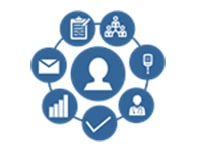
CDC-Recognized Organization Communication
Although many community-based CDC-recognized organizations have extensive experience delivering the National DPP lifestyle change program to individuals in their communities, many of these organizations have never tried to access health care payer reimbursement. A network of CDC-recognized organizations that can serve Medicaid beneficiaries, and receive Medicaid reimbursement, is an important component of a state’s successful implementation of the benefit and enhance sustainability. This section explores strategies to communicate with CDC-recognized organizations.
Communication to Explain How CDC-Recognized Organizations Enroll in Medicaid
For states that have created a new provider type for CDC-recognized organizations, it is important to communicate information on how those organizations enroll in Medicaid as service providers. Many CDC-recognized organizations have never enrolled in Medicaid, although some may have enrolled in Medicare as a Medicare Diabetes Prevention Program (MDPP) supplier. A state may want to dedicate one or more webinars specifically to the topic of how CDC-recognized organizations enroll in the Medicaid program. To learn more about why a state would create a new provider type, visit the Determining the Medicaid Enrolled Provider Type page of the Coverage Toolkit. The examples below describe how other states have held Medicaid enrollment webinars and meetings.
California
State Example
California: Create a New Provider Type with Webinar Training
California created a new provider type for CDC-recognized organizations and explained through a webinar how CDC-recognized organizations enroll in Medi-Cal (California’s Medicaid program). The webinar slides are posted on California’s National DPP webpage. California’s National DPP webpage also includes an FAQ document with additional details on how CDC-recognized organizations enroll in Medi-Cal.
For more information on California’s Medicaid coverage of the National DPP lifestyle change program, visit the California State Story of Medicaid Coverage page of the Coverage Toolkit.
Maryland
State Example
Maryland: Webinars, Slides, Guidance Documents, and Troubleshooting Challenges
Maryland Medicaid created a new provider type for CDC-recognized organizations and explained the process for how CDC-recognized organizations enroll in Maryland’s electronic Provider Revalidation and Enrollment (ePREP) portal through a webinar and posted slides. Maryland Medicaid provides access to webinars (both upcoming live webinars and recordings of past webinars), the ePREP link, and other documents related to Medicaid coverage of the National DPP lifestyle change program through their managed care program HealthChoice DPP website. Maryland’s website also includes numerous reference documents for CDC-recognized organizations to use as they enroll in Medicaid.
CDC-recognized organizations can encounter unexpected challenges when enrolling in Medicaid. Maryland Medicaid has addressed these challenges in two ways. First, Maryland Medicaid has a dedicated email address on their website for CDC-recognized organizations to use if they encounter problems with their Medicaid enrollment. Second, Maryland Medicaid continuously updates its online resources to include answers to frequent questions and helpful tips for how to avoid common Medicaid enrollment application mistakes.
For more information on Maryland’s Medicaid coverage of the National DPP lifestyle change program, visit the Maryland Medicaid Demonstration Project page of the Coverage Toolkit.
New York
State Example
New York: Create a New Provider Type with Webinar Training
New York State created a new provider type for CDC-recognized organizations and held webinars explaining how to enroll. New York State’s Medicaid enrollment slides are available on the Medicaid enrollment page of their state National DPP website. The Medicaid enrollment page also includes training videos and links to additional resources for CDC-recognized organizations, including a resource specifically designed for CBOs that have CDC recognition but are not yet enrolled in Medicaid.
For more information on New York State’s Medicaid coverage of the National DPP lifestyle change program, visit the New York State Story of Medicaid Coverage page of the Coverage Toolkit.
Oregon
State Example
Oregon: Create a New Provider Type with Webinar Training
As part of a three-part webinar series on the National DPP lifestyle change program, Oregon Health Authority held a webinar specifically for CDC-recognized organizations. The webinar included an overview of the new provider type Oregon created for CDC-recognized organizations to enroll in Medicaid and how CDC-recognized organizations contract with the state’s coordinated care organizations (CCOs) to receive reimbursement for delivering the program to Medicaid beneficiaries. To view the webinars and slides, click here (scroll down page to “National Diabetes Prevention Program” section).
For more information on Oregon’s Medicaid coverage of the National DPP lifestyle change program, visit the Oregon Medicaid Demonstration Project page of the Coverage Toolkit.
Pennsylvania
State Example
Pennsylvania: Create a New Provider Type and Survey CDC-Recognized Organizations
Pennsylvania Medicaid began its process of communicating the creation of a new Medicaid provider type to CDC-recognized organizations through a Medicaid bulletin to inform CDC-recognized organizations how to enroll in Medicaid. In conjunction with the bulletin, Pennsylvania surveyed all CDC-recognized organizations in the state to assess the organizations’ knowledge of the new provider type and to understand what type of technical assistance would be most valuable regarding enrolling in Medicaid and delivering the National DPP lifestyle change program to Medicaid beneficiaries.
The state’s benefit kick-off webinar included information on how to enroll in Medicaid, including screen shots of the online process. During the webinar, Pennsylvania also provided a contact at the Medicaid program that CDC-recognized organizations could email if they had questions.
For more information on Pennsylvania’s Medicaid coverage of the National DPP lifestyle change program, visit the Pennsylvania State Story of Medicaid Coverage page of the Coverage Toolkit.
Communication to Help CDC-Recognized Organizations Contract with MCOs
In states with Medicaid managed care, CDC-recognized organizations contract with (also called enroll with) Medicaid MCOs to receive reimbursement for delivering the program to Medicaid beneficiaries. Many community-based CDC-recognized organizations have never contracted with MCOs before. Meetings, webinars, and written guidance from the state can help CDC-recognized organizations understand how to contract with MCOs.
To learn more about contracting between CDC-recognized organizations and MCOs, see the MCO Contracting with CDC-Recognized Organizations page of the Coverage Toolkit.
Maryland
State Example
Maryland: Provide Contracting Resources and Hold “Meet and Greets”
Maryland Medicaid’s HealthChoice DPP website provides resources to assist CDC-recognized organizations and MCOs with the contracting process. These resources include:
- HealthChoice Diabetes Prevention Program Manual that outlines how CDC-recognized organizations enroll in Maryland Medicaid and contract with Maryland MCOs. It also details MCOs’ requirements for referrals and reimbursement.
- Frequently Asked Questions—HealthChoice DPP Implementation that includes questions and answers specific to contracting between CDC-recognized organizations and MCOs.
- HealthChoice DPP Guidance for CDC-Recognized Organizations Applying to Become a Maryland Medicaid DPP Providers that describes the process for CDC-recognized organizations to enroll in Maryland Medicaid and contract with MCOs.
Maryland Medicaid has also organized a series of HealthChoice DPP Provider Information Sessions, more frequently referred to as “meet and greets,” between MCOs and Medicaid-enrolled CDC-recognized organizations. These “meet and greet” sessions allow Medicaid-enrolled CDC-recognized organizations to showcase their programs to the Medicaid MCOs and make the case for why the MCOs’ would want to contract with their organization. After these sessions, CDC-recognized organizations and MCOs have the information and contacts necessary to pursue contracting with each other.
To date, Maryland Medicaid has hosted seven of these “meet and greet” sessions. Each one-hour session features two or more Medicaid-enrolled CDC-recognized organizations and representatives from each MCO. Representatives from the MCOs have included the medical director, compliance officer, quality director, vice president of government contract management, senior director of administration, and interim director of Medicaid operations.
When designing the “meet and greets,” Maryland Medicaid surveyed the state’s MCOs to find out what type of information they wanted to learn about the CDC-recognized organizations. Maryland Medicaid provides each CDC-recognized organization with the following guidance for how to structure their presentation to the MCOs:
- Overview of the organization’s mission, leadership, and staff
- DPRP status
- Delivery modalities for the National DPP lifestyle change program
- Expertise delivering to specific populations (e.g., African American males, immigrant populations, low education populations, etc.)
- Catchment
- Program statistics (e.g., enrollment, retention, weight loss)
- Recruitment and enrollment strategies
- Data collection and billing capabilities
- Curriculum used
- Other wrap around services
For more information on Maryland’s Medicaid coverage of the National DPP lifestyle change program, visit the Maryland Medicaid Demonstration Project page of the Coverage Toolkit.
Pennsylvania
State Example
Pennsylvania: Presentation of Success Stories
Pennsylvania’s webinar on how CDC-recognized organizations enroll in Medicaid (described above) also included presentations by CDC-recognized organizations in the state that have successfully contracted with MCOs. Representatives from these CDC-recognized organizations provided an overview of the contracting process and offered tips and strategies for how to contract with MCOs. These strategies included the importance of CDC-recognized organizations taking the initiative to outreach to MCOs, understanding that each MCO has its own unique contracting process, and remaining both patient and persistent throughout the process.
For more information on Pennsylvania’s Medicaid coverage of the National DPP lifestyle change program, visit the Pennsylvania State Story of Medicaid Coverage page of the Coverage Toolkit.
Communication to Increase Recruitment and Retention with the Program
States can also support CDC-recognized organizations and lifestyle coaches by helping them increase recruitment and retention of program participants in the National DPP lifestyle change program. To learn more, visit the Recruitment and Referral and Retention pages of the Coverage Toolkit.
Minnesota
State Example
Minnesota: Best Practices Guide
The Minnesota Department of Health, NACDD, and Leavitt Partners compiled evidence- and experience-based best practices on recruitment, enrollment, and retention into a single Best Practices Guide. The guide is written for lifestyle coaches and program coordinators who serve low income, Medicaid-eligible participants. However, many of the principles discussed in the guide could be used by any stakeholder working to increase recruitment, enrollment, and retention in the National DPP lifestyle change program. For more information on the guide, see the Retention page of the Coverage Toolkit.
The Minnesota Department of Health also created a series of short videos to accompany the guide and help lifestyle coaches, program coordinators, and other individuals working with CDC-recognized organizations increase participation in their National DPP lifestyle change program. The videos include:
- MN National Diabetes Prevention Program Best Practices Guide – Hennepin Health. This short video explains how Hennepin Health has integrated Community Health Workers (CHWs) and healthy food boxes into their National DPP lifestyle change program.
- MN National Diabetes Prevention Program Best Practices Guide – Recruiting Participants. This short video covers some effective strategies for recruiting participants into the program.
- MN National Diabetes Prevention Program Best Practices Guide – Keeping Participants Engaged. This short video provides strategies for engaging participants.
- MN National Diabetes Prevention Program Best Practices Guide – Lifestyle Coaches. This short video covers strategies for selecting and training lifestyle coaches.
For more information on Minnesota’s Medicaid coverage of the National DPP lifestyle change program, visit the Minnesota State Story of Medicaid Coverage page of the Coverage Toolkit.
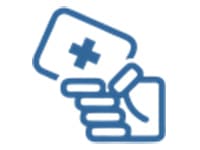
Medicaid MCO Communication
In states with Medicaid managed care, MCOs are key partners in implementing and scaling the National DPP lifestyle change program, including promoting uptake of the benefit. To learn more about the unique role of MCOs, visit the Engaging MCOs to Attain Coverage page of the Coverage Toolkit.
Maryland
State Example
Maryland: Host a Monthly Call
Maryland Medicaid has taken deliberate steps to engage the state’s MCOs by hosting a monthly one-hour call with MCO representatives responsible for operationalizing the National DPP benefit within their plan. The call allows Maryland Medicaid, public health, and individual MCOs to share relevant updates (including provider enrollment and MCO contracting updates with CDC-recognized organizations) and solicit feedback on everything from state-wide referral efforts to the eligibility algorithm used by all of the MCOs.
Please note that Maryland provides grants to their MCOs through funding they receive from NACDD to support their engagement in these meetings.
For more information on Maryland’s Medicaid coverage of the National DPP lifestyle change program, visit the Maryland Medicaid Demonstration Project page of the Coverage Toolkit.
Oregon
State Example
Oregon: Host a Webinar Series
As part of a three-part webinar series on the National DPP lifestyle change program, Oregon Health Authority held a webinar specifically for CDC-recognized organizations and another specifically for coordinated care organizations (CCOs) (a third webinar for HCPs is described below). The webinars included an overview of the new provider type Oregon created for CDC-recognized organizations to enroll in Medicaid and how these organizations contract with the state’s CCOs. The webinars and slides are available here (scroll down page to “National Diabetes Prevention Program” section).
For more information on Oregon’s Medicaid coverage of the National DPP lifestyle change program, visit the Oregon Medicaid Demonstration Project page of the Coverage Toolkit.

Health Care Provider Communication
HCPs are a key part of a state’s National DPP ecosystem because they can identify and refer Medicaid patients who have prediabetes to CDC-recognized organizations. States that have statewide meetings or webinars to introduce the benefit may invite HCPs to attend. States may also elect to hold a meeting or webinar and develop resources specifically targeted to HCPs.
The American Medical Association (AMA) has collaborated with health care organizations across the country to build sustainable diabetes prevention strategies. In 2017, the AMA formed the Diabetes Prevention Best Practices Workgroup (DPBP) with representatives from 6 health care organizations actively implementing diabetes prevention. Workgroup members distilled their strategies into best practice recommendations for three strategy maturity phases, one of which includes promotion and dissemination. The full study is available here.
CDC has developed a marketing and promotion resource titled Strategies that Work: Engaging Health Care Providers as Program Promotion Partners, available here*. For more helpful resources, visit the National DPP Customer Service Center’s National DPP Resources for Engaging Health Care Providers page.
This section includes examples of communication strategies states have employed to outreach HCPs. For information specific to how states can work with accountable care organizations (ACOs), please see the How to Engage ACOs in the National DPP Lifestyle Change Program page of the Coverage Toolkit.
Delaware
State Example
Delaware: Leveraging Partners to Engage HCPs
The Delaware Diabetes and Heart Disease Prevention and Control Program (DHDPCP), housed within the Delaware Department of Health and Social Services (DHSS) Division of Public Health, partnered with the non-profit organization Quality Insights to engage HCPs in the National DPP lifestyle change program. To increase HCPs awareness of prediabetes and enable providers to easily refer eligible patients to CDC-recognized organizations, Quality Insights developed online learning modules that included patient scenarios so providers could visualize the steps for referrals. DHSS and Quality Insights also enacted a National DPP referral letter campaign at 10 health system sites. Quality Insights helped to configure the health system’s EHRs to create reminders for providers to discuss prediabetes and the National DPP lifestyle change program with qualifying patients and to refer patients to the CDC-recognized YMCA of Delaware. For more detail on Delaware public health’s partnership with Quality Insights, see the Delaware Success Story here.
Maryland
State Example
Maryland: MCO Outreach to HCPs
MedStar Health, a Medicaid MCO in Maryland, shared a message to HCPs from MedStar’s Medical Director. Posted on MedStar’s website, the letter briefly describes the National DPP lifestyle change program and explains that the program is a covered benefit in the Maryland Medicaid program. MedStar’s Medical Director encourages HCPs to screen patients for prediabetes and refer eligible patients to the program, underscoring the proven impact a physician referral has on an individual’s likelihood to enroll in the program.
For more information on Maryland’s Medicaid coverage of the National DPP lifestyle change program, visit the Maryland Medicaid Demonstration Project page of the Coverage Toolkit.
Oregon
State Example
Oregon: Toolkit, Guide, and Webinar for HCPs
The Oregon Health Authority (OHA) and the Oregon Medical Association partnered to create a Steering Toward Health campaign that aims to reduce the incidence of type 2 diabetes and other chronic conditions among Oregonians. The campaign includes a Toolkit of resources designed to help HCPs talk to their patients about prediabetes and refer eligible patients to CDC-recognized organizations. Resources in the Toolkit include screening and diagnostic criteria for prediabetes, tips for incorporating diabetes screening into patient visits, success stories from physicians, and statistics on diabetes and prediabetes. The Toolkit also contains resources HCPs can use for their patients, including a one-page handout for patients who receive a prediabetes diagnosis, a directory of CDC-recognized organizations in the state, and posters illustrating how individuals have reversed their prediabetes.
Additionally, OHA developed a 2023 Companion Guide for Coordinated Care Organizations and Oregon Health System Partners Serving Oregon Health Plan Members to provide technical and policy direction for implementation and address commonly asked questions. This guide provides general information on the National DPP in Oregon, describes pathways to implementation through CCOs, provides a review of Oregon’s benefits, and details funding methodologies.
As part of a three-part webinar series on the National DPP lifestyle change program, OHA held a webinar specifically for HCPs. The webinar opened with an overview of the challenge of type 2 diabetes and why the National DPP lifestyle change program matters. Presenters then explained how HCPs could identify and refer patients with prediabetes to programs and specifically how HCPs could work with the state’s CCOs and CDC-recognized organizations. The webinar recording and slides are available here (scroll down page to “National Diabetes Prevention Program” section).
For more information on Oregon’s Medicaid coverage of the National DPP lifestyle change program, visit the Oregon Medicaid Demonstration Project page of the Coverage Toolkit.
Health Care Provider Videos – Prediabetes and the National DPP
These videos were developed to encourage health care teams to work together and with their patients to identify prediabetes and increase referrals to the National DPP lifestyle change program. These videos were created by NACDD in collaboration with the AMA and through support from the CDC, Division of Diabetes Translation.Team-Based Care: Clinical Care Management and the National DPP
This video, based in a hospital, highlights the responsibility of care management in implementing and sustaining effective diabetes prevention strategies by health care providers, including referrals to the National DPP lifestyle change program.
Timing: 3:18 (Note: both Team-Based Care videos are the same until 1:16)
Audience: Clinical Care team (physician, medical assistant, front desk staff, care manager, practice manager, care coordinator, nurse, provider, etc.)
Team-Based Care: Clinical Care Team Roles and Responsibilities for Diabetes Prevention
This video, based in a clinical setting, explores the different roles health care team members can play in identifying patients with prediabetes and providing care and follow-up, including referrals to the National DPP lifestyle change program.
Timing: 4:05 (Note: both Team-Based Care videos are the same until 1:16)
Audience: Clinical Care team (physician, medical assistant, front desk staff, care manager, practice manager, care coordinator, nurse, provider, etc.)
Clinical Care: Prediabetes Identification and Treatment
This video illustrates how health care providers can help their patients address prediabetes through referral to the National DPP lifestyle change program.
Timing: 4:18
Audience: Clinical Care team (physician, nurse practitioner, physician’s assistant, nurse, medical assistance, care manager, care coordinator, etc.)
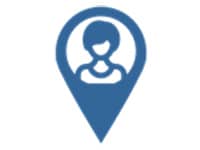
Participant Communication
According to the CDC, one in three Americans has prediabetes, yet most do not know it. Although prevalent, many people remain unaware that prediabetes is a diagnosis, and many do not know that type 2 diabetes is preventable. Communicating directly to individuals who may have prediabetes can help boost enrollment in programs across the state and move stakeholders toward the goal of reducing diabetes in their state.
The MCO Phone Call Script for Outreach to Medicaid Beneficiaries gives example language for an MCO or other partner to perform initial outreach about the National DPP lifestyle change program to Medicaid beneficiaries identified with prediabetes or at high risk for developing type 2 diabetes. It was adapted from a Virginia Department of Health MCO pilot.
National Marketing Materials for State Use
CDC’s Division of Diabetes Translation has developed the Path 2 Prevention resource and infographic. This online planning resource can be used to inspire enrollment in the National DPP lifestyle change program. The P2P bridges the gap between the CDC’s Prediabetes Risk Test and enrollment and can be a useful tool in participant outreach efforts.
CDC also publishes a repository of videos and podcasts to be used in marketing efforts. For example, Imagine You Preventing Type 2 takes viewers inside the real-life experiences of three participants in the National DPP lifestyle change program. Through unscripted storytelling, participants share their progress, including overcoming plateaus, handling obstacles, and celebrating successes, all with the support of their Lifestyle Coach. Experiences from additional program participants can be found here.
CDC has developed a Recruitment and Promotional Materials Catalogue (i.e., campaigns and advertisements, sample newsletter articles, social media posts, postcards, radio scripts, and more) focused on supporting organizations scaling the National DPP in underserved areas across the country. The priority populations served by these resources include: Medicare beneficiaries, men, African Americans, Asian Americans, Hispanics, American Indians, Alaska Natives, Pacific Islanders, and noninstitutionalized people with visual impairments or physical disabilities.
California
State Example
California: Prediabetes Awareness Campaign
The California Department of Public Health (CDPH) partnered with the marketing firm Media Solutions to implement a prediabetes awareness campaign. The campaign was designed to educate and increase awareness of prediabetes and encourage people to take the Do I Have Prediabetes Risk Test. From June through August 2020 the campaign targeted English and Spanish speaking Californians ages 18+. The campaign involved a radio campaign in four target markets, television ads, out of home postings (including postings on bus stops and billboards along freeways) in two markets, and a statewide digital campaign.
For more information on California’s Medicaid coverage of the National DPP lifestyle change program, visit the California State Story of Medicaid Coverage page of the Coverage Toolkit.
Colorado
State Example
Colorado: Create a Website
The Colorado Department of Public Health and Environment (CDPHE) created a participant-facing website called Colorado National Diabetes Prevention Programs. The website presents educational health information, including factors that increase risk for developing prediabetes and type 2 diabetes. In addition to details on the National DPP lifestyle change program, the website displays written testimonials from participants and information on program eligibility and cost. A diabetes risk test is integrated into the site that provides users with a diabetes risk score after answering eight questions. Although there is not an option to enroll in the National DPP lifestyle change program through their website, contact information is included for existing programs in eight Colorado counties.
Illinois
State Example
Illinois: Create a Website
The Chicago Department of Public Health, in partnership with Illinois Public Health Institute (IPHI), created a website called Chicago CARES to Prevent Diabetes to support their diabetes prevention initiative. The website presents educational health information, including factors that increase risk for developing prediabetes and type 2 diabetes. In addition to details on the National DPP lifestyle change program, the website displays written testimonials from participants and information on existing programs in the Chicago area. This unique resource was created to support Medicaid coverage of the National DPP lifestyle change program by encouraging participants to enroll. The website’s participant-facing content is included in both English and Spanish.
The Chicago CARES to Prevent Diabetes website also provides resources for CDC-recognized organizations including training videos, customizable tools, and frequently asked questions surrounding Medicaid coverage and enrollment.
To learn more about Illinois’ Medicaid coverage for the National DPP lifestyle change program, visit the Illinois State Story of Medicaid Coverage page of the Coverage Toolkit.
Kentucky
State Example
Kentucky: Create a Website
A collaboration among Kentucky Public Health and numerous partners created the Prevent Diabetes Eastern Kentucky website. In addition to information on prediabetes and the National DPP lifestyle change program, the site includes videos of eastern Kentuckians sharing their stories of prediabetes and type 2 diabetes.
Maryland
State Example
Maryland: Create a Website
The Maryland Department of Health created a webpage called Prevent Type 2 Diabetes geared towards individuals who may have prediabetes. The website encourages individuals to take the Do I Have Prediabetes Risk Test, talk to their doctor, and find a local National DPP lifestyle change program. Website viewers can also watch “A Change for Life” video about the program. Although Maryland’s website is not explicitly geared toward Medicaid beneficiaries, states interested in creating a similar website could highlight that the program is free of charge for eligible Medicare and Medicaid beneficiaries.
For more information on Maryland’s Medicaid coverage of the National DPP lifestyle change program, visit the Maryland Medicaid Demonstration Project page of the Coverage Toolkit.
Minnesota
State Example
Minnesota: Include National DPP Information on State Department of Health Website
A page on the Minnesota Department of Health website provides information on the National DPP lifestyle change program, a link to the Do I Have Prediabetes Risk Test, and a schedule of classes throughout the state. The Minnesota Department of Health also created a short video called Join a Program in Minnesota that features lifestyle coaches encouraging individuals to join a National DPP lifestyle change program.
For more information on Minnesota’s Medicaid coverage of the National DPP lifestyle change program, visit the Minnesota State Story of Medicaid Coverage page of the Coverage Toolkit.
Montana
State Example
Montana: Provide Helpful Resources on Website
The Montana Department of Public Health and Human Services (DPHHS) leveraged the Prediabetes Awareness Campaign Toolkit marketing materials for their Montana Diabetes Prevention Program website and directs readers to the Do I Have Prediabetes website. The website also includes a 30-second Montana-specific video that features a state sheriff discussing his prediabetes diagnosis and the steps he took in response.
Additionally, DPHHS created a webpage, called the Montana DPP Story Map, that provides information specifically designed for state residents. The story map includes information about the National DPP lifestyle change program, explains that it is free for eligible Medicaid and Medicare beneficiaries, includes success stories from program participants, and provides information on where individuals can find a class, places to exercise, and fresh food (including the Montana Food Bank, farmer’s markets, and supermarkets that accept WIC benefits).
For more information on Montana’s Medicaid coverage of the National DPP lifestyle change program, visit the Montana State Story of Medicaid Coverage page of the Coverage Toolkit.
Oregon
State Example
Oregon: Partnering to Overcome Barriers to Healthier Eating and Physical Activity
Oregon’s Place Matters initiative is an effort of the Oregon Health Authority to improve the health and well-being of Oregonians by increasing opportunities to access healthy food and have safe spaces to move, play, and sleep. The Place Matters initiative includes resources on prediabetes and portrayals of how different community organizations are teaming up to address and overcome the challenges that are known to create barriers to healthier eating and activity. Videos include:
- Partners Create a Healthier Tillamook County
- How Places Cause and Solve Prediabetes
- How Communities Can Prevent Diabetes
- Preventing Diabetes in Your Community
For more information on Oregon’s Medicaid coverage of the National DPP lifestyle change program, visit the Oregon Medicaid Demonstration Project page of the Coverage Toolkit.
State Specific Materials
Many states have created their own diabetes prevention webpage targeted to the general public. These webpages make the state’s residents aware of prediabetes, describe the National DPP lifestyle change program, and provide information on how to participate in the National DPP lifestyle change program.
*This resource was supported by Cooperative Agreement Number NU58DP006364-03-00, funded by the Centers for Disease Control and Prevention. Its contents are solely the responsibility of the authors and do not necessarily represent the official views of the Centers for Disease Control and Prevention or the Department of Health and Human Services


